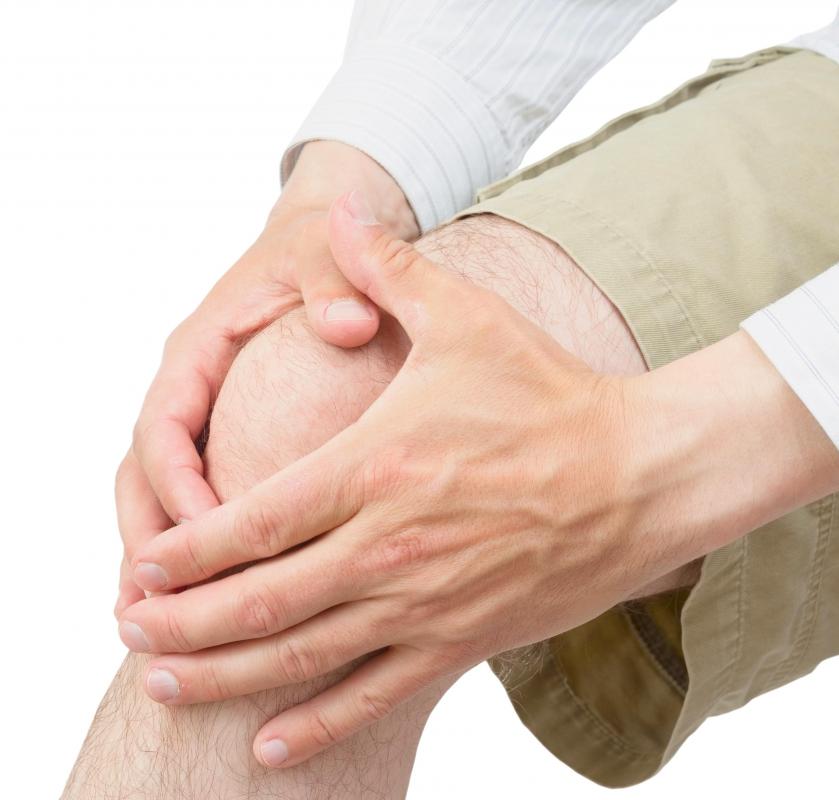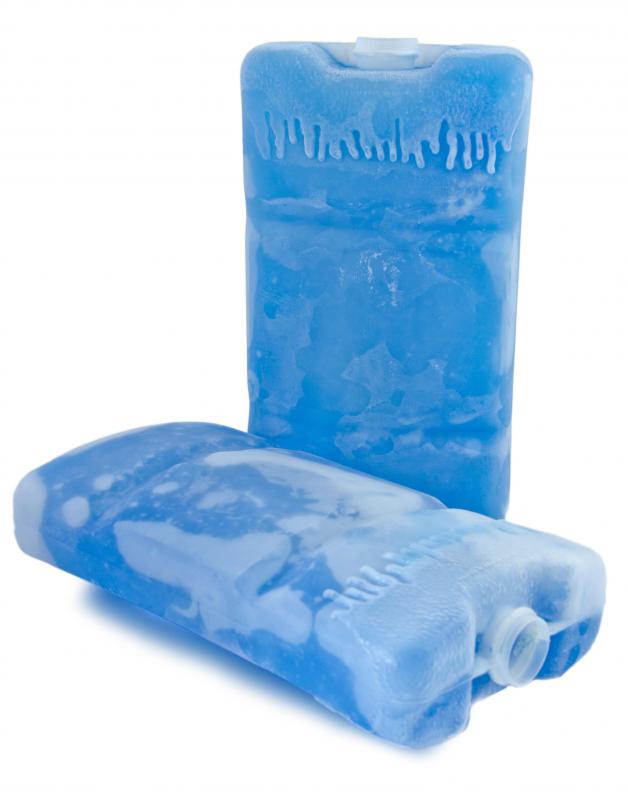At TheHealthBoard, we're committed to delivering accurate, trustworthy information. Our expert-authored content is rigorously fact-checked and sourced from credible authorities. Discover how we uphold the highest standards in providing you with reliable knowledge.
How Should I Treat a Knee Infection?
The knee is a very important joint. It allows a person to walk, run, sit, and kneel. Thus, when a person contracts a knee infection, it is important to seek a doctor's help for proper treatment. Often an infection can be treated with antibiotics, but surgery may also be needed to get rid of the problem. It all depends on the type and severity of infection.
There are several conditions that can be classified as a knee infection, including knee bursitis, septic arthritis, osteomyelitis, and cellulitis. Infections typically are caused by bacteria, virus, or a fungus. Of all the infections, knee bursitis may be the most common. It is caused when an organism, usually a bacterium, invades the bursae, a sac of fluid that helps lubricate the joint. Bacterial infections also can cause arthritis, such as with septic arthritis—the bacteria may enter the body through a wound and make its way to the knee where it settles. Bone also sometimes gets infected, causing a condition called osteomyelitis. This infection can cause an abscess in the bone that can cut off nutrients and oxygen to the bone. Another infection called cellulitis can affect the knee when bacteria infect the skin above the knee.

Doctors normally treat bacterial infections with antibiotics. Viral infections, however, commonly clear up by themselves and require no medication. Antibiotics are not commonly used for viral infections because viruses do not usually respond to them.
An infection can also be the result of a complication of knee surgery. This type of infection is called a postoperative infection. In this case, bacteria can invade the knee and cause pain, fever, and swelling. Often, the surgeon will have to go in and remove or wash out the bacteria. After this, antibiotics are usually administered to eradicate the rest of the pathogen.

Surgical treatment methods may also be used when the knee infection is severe, such as in advanced cases of osteomyelitis. If the abscess of bacteria has created a hole in the bone, a doctor may have to go in to drain the infection. Another treatment option for draining an infection is a needle aspiration. During this procedure, a doctor typically uses a needle to suck out the infection. In either case, antibiotics will usually have to be taken for a period of time after the procedure to ensure the bacteria is eradicated.
AS FEATURED ON:
AS FEATURED ON:















Discussion Comments
Can prepatellar bursitis cause extreme pain?
@Amphibious54- Water on the knee can also be fluid or blood buildup around the knee joint. This can often occur from knee injuries, especially an ACL tear.
This type of water on the knee is different from patellar bursitis because the fluid build-up occurs outside of the bursa and around the knee joint. However, the treatments for the two types of water on the knee are very similar. Whatever, the cause, if you have pain on the knee it is a good idea to have a doctor examine your injury.
@amphibious54- what you are describing sounds like prepatellar bursitis. This is different from a bursa infection in the knee.
prepatellar bursitis occurs from bending and kneeling for excessive periods of time. It is common in traumatic knee injuries and in athletes who bend and kneel for long periods of time, i.e. catchers, football linemen, and hockey goalies. Essentially, the constant bending motion causes the bursa to become swollen and inflamed, causing pain over the top of the kneecap. The bursa will then produce more fluid, and the combination of swelling and excess fluid causes pain and limited motion.
Is water on the knee the same as an infection in the knee? I had what was referred to as water on the knee some years ago because of fluid leaking from my bursa sac. I had to have my knee drained. I did not know if this was the same thing. My knee problems were the result of a sports injury not an infection. How would my knee become infected if there were no cuts or open wounds?
Post your comments